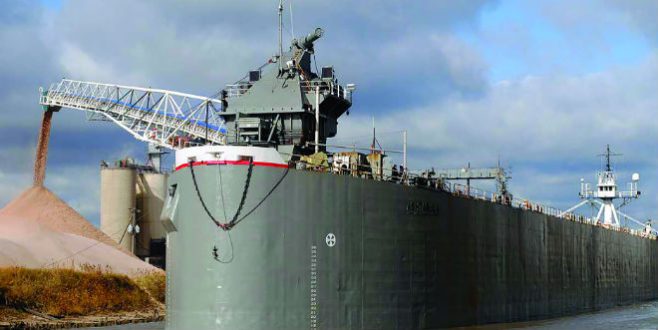Apr 29, 2016Michigan company turning rock dust into fertilizer
Thomas Logue may be a financial planner. But he’s a farmer at heart.
Growing up around and working on farms, Logue holds a degree in agriculture from the University of Illinois. He went on to establish a financial planning business in Hinsdale, Illinois, but Logue, now 58, continued to study organic farming and related practices – including the use of rock dust, or finely crushed rock, in organic farming to return elements and trace minerals to the soil. Along the way, he heard about an opportunity to harvest stamp sand deposits in Michigan’s Upper Peninsula to be crushed into rock dust. Stamp sands are the post-industrial waste from Keweenaw Peninsula copper mines.

“Stamp sands are 100 to 150 years old, and they have just sat there and weathered and migrated and eroded into Lake Superior for all of these years,” said Logue, who’s named his rock dust operation Torch Lake Industries.
Logue has a permit from the Michigan Department of Environmental Quality (MDEQ) to harvest a stamp sand deposit called the Gay Sands, about halfway up the Keweenaw Peninsula on the eastern shore of Lake Superior. He also needs the U.S. Army Corps of Engineers to issue a permit to move forward; it was pending at press time.
“My permit is four miles long and some of it is in the water,” he said. “The state and many government agencies want the sands removed because it’s a detriment to the lake trout spawning grounds that are in the water adjacent to my permit.”
Virginia Pennala, Water Resources Unit district supervisor for the MDEQ Upper Peninsula District Office, explains that stamp sands were created from mining tails, or the ground-up rock that was discarded after removing the copper.
“About 100 years ago, the mining companies in that area started dumping tails in Lake Superior,” Pennala said. “The material that Torch Lake Industries has a permit to remove has been in the lake for about 100 years. It’s the coarser material that’s been in the water and gradually has washed downdrift and wound up on the beach and in the shallow parts of the lakeshore … that’s what he is looking at taking.”
Some stamp sands are toxic and not usable for anything. Pennala said the materials Logue plans to take are not toxic.


“The coarser materials have less surface area,” she said. “Whatever materials are in that stamp sand, it’s less of a risk than if you use the really fine powdery material that has stayed on the lake bottom and not washed up. That’s the kind of material (Logue will be excavating).”
Logue will use earth movers and other equipment with conveyor belts to load the sand onto boats; there’s a deep water port within his permit area. The coarse sand will be ground finer – either at the site or at another location – and then shipped to customers to be blended into their soil.
“This powder, if you till it into your soil, you will have immediate hikes in yield that are double digit – in fact, the worse the soil is the higher percentage gain because it super-fortifies the soil,” Logue said. “In addition to that, it increases the nutrient value in the fruit or vegetable … ordinary nitrogen phosphate potassium (NPK) blend fertilizer does not replenish the micronutrients in the soil – it merely creates an environment where the plant can grow. Rock dust blended with the soil mixes with microorganisms and generates more uptick in nutrients.”
While home gardeners will be able to purchase or order rock dust in smaller amounts from Torch Lake Industries’ website, Logue has his eye on farmers who will buy in bulk.
“Commercially, we’ll be selling it by the ton,” Logue said. “Hopefully, we’ll be selling to grower associations. For Michigan, we’ll be targeting apples, cherries, blueberries and stone fruit. It can be used as far away as southern California for almonds. It can be used for citrus.
“Really what I’m going after is the high-producing crops because they’re able to absorb the cost of my products even though, initially, anyway, I’m going to price it based on what they would be paying for NPK chemical treatment every year.”
Logue expected to be excavating by April, and was planning to partner with a few key growers to do field test plots.
“We’re going to sell that product to them for our cost of production and transportation, and I will donate the material basically at no charge,” he said. “I would hope that if they ran these in test plots where they did not use any other chemical fertilizer, that my product will outperform the chemically treated test plots.”
At the same time, he’ll be ready for paying customers.
“There may be no one saying we’ll take 10,000 tons of it,” he said, “but if they say they want it, we’re ready to go.”
— Kathy Gibbons, FGN correspondent















